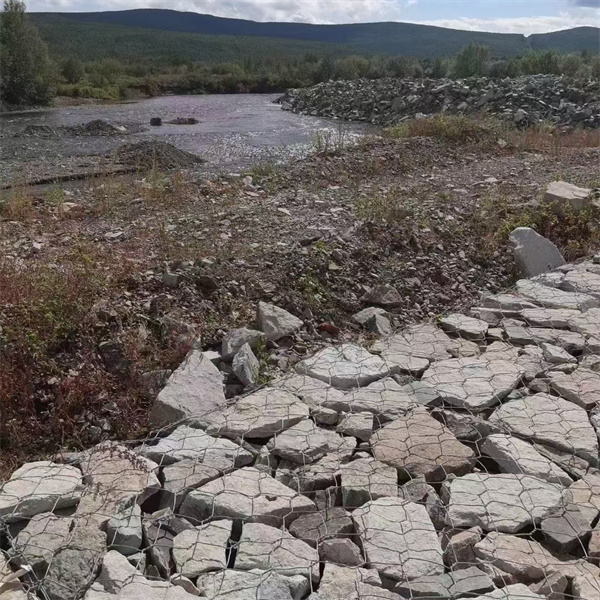Dùbh . 04, 2024 16:03 Back to list
Gabion and Riprap Solutions for Sustainable Erosion Control and Landscaping Applications
The Importance of Gabions and Riprap in Erosion Control and Landscaping
In the ever-evolving field of civil engineering and landscaping, the use of gabions and riprap has emerged as a practical solution to controlling erosion and enhancing the aesthetic value of various projects. Both materials, while serving distinct functions, are integral parts of sustainable landscape management and are produced by specialized manufacturers.
Understanding Gabions
Gabions are essentially wire mesh containers filled with rocks or other suitable materials. They come in different shapes and sizes, but their primary purpose remains constant to provide structural support and control water flow. Used widely in civil and environmental engineering projects, gabions are effective in preventing soil erosion, particularly in steep slopes and riverbanks. Manufacturers typically produce them in various sizes, providing versatility for numerous applications, including retaining walls, riverbank protection, and even decorative elements in landscaping.
One of the significant advantages of gabions is their permeability. Unlike solid barriers, gabions allow water to flow through, reducing the buildup of hydrostatic pressure that often leads to erosion and structural failure. The rocks inside the gabions can also be strategically selected for aesthetic appeal, allowing for a blend of functionality and beauty. When correctly placed, gabions can help restore natural landscapes and encourage vegetation growth in related areas, promoting biodiversity.
The Role of Riprap
Riprap, on the other hand, consists of loose stones or concrete pieces used to protect shorelines, riverbanks, and slopes from erosion. Typically larger and more irregular than those used in gabions, riprap is placed closely together to create a robust barrier against water flow and wave action. Riprap is often used in conjunction with vegetation to enhance the stability of slopes and protect against flooding.
Manufacturers of riprap provide various sizes and types of rock to meet specific project needs, considering factors such as water velocity and the type of soil in the area. The use of riprap is particularly critical in areas prone to heavy rainfall or extreme weather, where water flows can erode soil rapidly. By slowing down the water flow and creating a physical barrier, riprap effectively extends the life of infrastructure projects and helps maintain the integrity of natural ecosystems.
gabion and riprap manufacturer

Environmental Benefits
Both gabions and riprap contribute positively to the environment. They are often made from natural materials, which means they blend well with the surrounding landscape. Unlike concrete walls or other hardscape installations, these options allow for a more natural water flow and often encourage the growth of native plants.
Sustainable manufacturers focus on sourcing materials locally, reducing transportation emissions and supporting local economies. Moreover, as weather extremes become more prevalent, the resilience that gabions and riprap offer against erosion is crucial for managing the impacts of climate change, ensuring that landscapes remain stable and functional.
Choosing the Right Manufacturer
When it comes to selecting a gabion or riprap manufacturer, there are several factors to consider. Quality of materials, experience, and adherence to environmental standards are essential. A reliable manufacturer should provide detailed specifications on their products, as well as support for installation and maintenance.
Moreover, working with manufacturers who have a robust portfolio and a proven track record can significantly influence the success of a project. Many manufacturers also offer customization options, allowing for tailored solutions that address specific geographical and environmental challenges.
Conclusion
In summary, gabions and riprap are invaluable tools in the fight against erosion and for enhancing landscape design. As manufacturers continue to innovate and improve the quality of their products, these materials will play an increasingly significant role in sustainable development and environmental conservation. For contractors, engineers, and homeowners looking to safeguard their properties while promoting natural beauty, investing in gabions and riprap is a wise choice that underscores a commitment to environmental stewardship. Given their numerous advantages, including cost-effectiveness, durability, and aesthetic appeal, gabions and ripraps are here to stay as vital elements in modern landscaping and civil engineering practices.
-
Why PVC Coated Gabion Mattress Is the Best Solution for Long-Term Erosion Control
NewsMay.23,2025
-
Gabion Wire Mesh: The Reinforced Solution for Modern Construction and Landscape Design
NewsMay.23,2025
-
Gabion Wall: The Flexible, Seismic-Resistant Solution for Modern Landscaping and Construction
NewsMay.23,2025
-
Gabion Wall Solutions: The Durable, Decorative, and Affordable Choice for Every Landscape
NewsMay.23,2025
-
Gabion Basket: The Durable and Flexible Alternative to Traditional Retaining Walls
NewsMay.23,2025
-
Gabion Basket: The Proven Solution for Slope Stability and Flood Control
NewsMay.23,2025
-
Versatility of Chain Link Fence Gabion
NewsMay.13,2025






